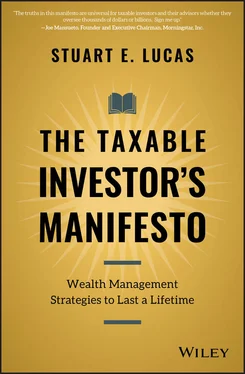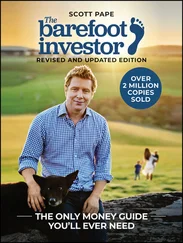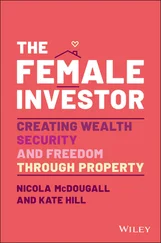One of the most important things my senior colleagues and I do is to help our clients think strategically across the business, financial, and cultural dimensions of their situation when making big decisions like this. We help them to prepare for sale, to identify presale estate and charitable planning opportunities, and to design a process to maximize value. Careful economic analysis of the timing, benefits, and risks of each pathway (concentration versus diversification), as well as thoughtful discussion of the impact on a family's culture, should not to be taken lightly. There are also questions of how to replace the economic engine and the cash flow that it generates, especially after the government has extracted a big tax bite out of the sale proceeds.
In other words, think twice before selling your business interests. A few years ago, I gave a lecture at Harvard Business School (HBS) reunions. Within a minute of explaining why thinking twice before selling was a good idea, I could feel the cell phone in my pocket vibrate. The text message said, “Please, can we talk today.” After my lecture, we spoke for thirty minutes. It turns out the person who reached out had received what felt like a generous unsolicited offer to buy his business, and he had signed the letter of intent to sell without thinking through the implications. Listening to me, he realized this was a big mistake.
There are certainly business and personal considerations associated with the decision to sell. But it is also important to think deeply about tax and estate planning opportunities and risks. Considering sale to an unaffiliated strategic or financial buyer when financial markets are ebullient, the business is performing well, and valuations are high, can be advantageous. In contrast, if you want to transfer assets from one generation in your family to the next, it's generally to your advantage to do so when valuations are near cyclical lows. It is also wise to utilize estate planning techniques when your equity is illiquid, and the business has not been optimized for maximum sale value. And there are tax consequences, especially with outright sale, not the least of which is, do you close the sale in late December or early in January the following year? If you decide to sell, are you prepared to reinvest the sale proceeds? Do you reinvest them all at once or over time? How will you replace the income you generated from your concentrated equity position after you've paid all those taxes? If you're a founder or inheritor of a family business, what will be the emotional and cultural impact on you and the family of selling the business? These are critical questions this HBS entrepreneur hadn't asked until he was deep into the sales process.
During the sale of a family business there are especially large planning implications. Selling a business outright may be exactly the right thing to do, but be prepared for the consequences across business, financial, and cultural dimensions. Some entrepreneurs and business owners feel a vacuum in their purpose and family culture after the business is sold. The fiscal responsibility imposed from the illiquidity of owning and operating a business can evaporate upon sale. Finally, many sellers of businesses have neither the experience, nor the infrastructure, nor the technical skills, nor the passion or inclination to manage a substantial bolus of cash. Liquidity events reduce risk in some ways, but they increase it in others.
Upon learning that someone is selling their business, it's natural and courteous to offer one's congratulations. But be prepared for an unexpected reply from self-aware sellers. “Why are you congratulating me? Yesterday I knew what business I was in. Today, I am in the investment business and I know nothing about it.”
In my experience, the challenge goes deeper. The instincts one develops to succeed in business are often contrary to the intuition one builds to succeed as an investor. Most successful business operators allocate capital to their winners, they aren't contrarians, and they are highly sensitized to momentum. They focus on what has worked and do more of it. They cut their losses quickly. Revenue growth, operating margins, return on invested capital, and cash flow are key metrics of success. Whether their company stock is public – with minute-to-minute pricing – or private, they know instinctively that long-term business performance can be disconnected from the stock price for extended periods.
Translating that mindset to investing is challenging. Business operators are inclined to get investment timing wrong because they are more sensitized to momentum than to value or growth at a reasonable price. Many find that being a contrarian is constitutionally challenging. They view turbulent financial markets as a reason to disengage rather than an environment to seek opportunity. In addition, like most of the rest of us, they have selective memories and prefer to focus on their winners, not their losers. It's certainly the winners that get talked about, but without measuring aggregate results it's easy to be left with the impression that investing is easier and more successful than it really is. Time and again I observe highly disciplined businesspeople fall into the trap of not sufficiently measuring the aggregate results of their financial investments. It's as if they don't want to know.
A subset of business sellers will pursue new businesses or other opportunities for focused investments that can be replacement engines for growth. Those new business pursuits do have significant failure risk, no matter how skilled the entrepreneur. So, for these “serial entrepreneurs,” I advise allocating a portion of the sale proceeds, ideally enough for a secure retirement, to diversified financial assets, managed according to the tenets in this book's first seven chapters. One business success does not guarantee the second one.
The first step on the road to success as a taxable investor is to build a wealth creation engine, almost invariably through concentrated efforts of time and capital. This chapter discussed key factors in diversifying some of the fruits of that effort into financial assets. For most people, accumulating financial assets is all about consistent saving and investing over many decades. It's about discipline and persistence. For a few, there is one highly impactful liquidity event, or at most a few events. In the latter case, making a timely transition, efficiently and effectively, is no small feat. There are many business, financial, and cultural factors to consider along the way – including investment, tax, and estate planning – to set yourself up to be a successful taxable investor in financial assets. Before we really dig into managing financial assets, we have one additional crucial topic to discuss that relates to everyone who has or will enjoy financial success. That topic is managing deferred tax liabilities.
A successful career converts the intangible asset of future promise into the tangible assets of income and, sometimes, business ownership.
Regardless of career path, saving money early and consistently, and investing it in a disciplined, diversified manner is the most predictable method of building to a secure retirement.
Business owners have a few ways to diversify: 1) they can do so within their business; 2) they can reinvest excess cash flow, including dividends or refinancing proceeds outside their business into diversifying assets, including financial assets; or 3) they can diversify by selling all or a portion of the business, paying capital gains taxes and reinvesting the net proceeds.
Think twice before selling your business. Before deciding, carefully consider not only your current circumstances but also what will likely happen in the months and years after selling – across business, financial, and cultural dimensions.
Читать дальше












